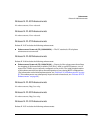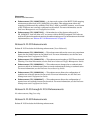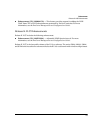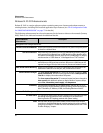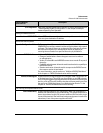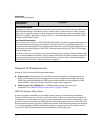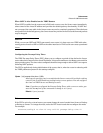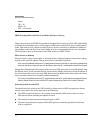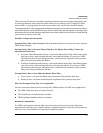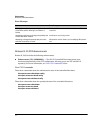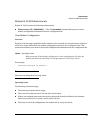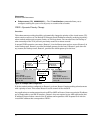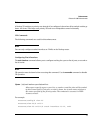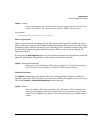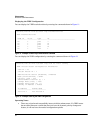
74
Enhancements
Release K.13.02 Enhancements
There are trade-offs between selecting a small advertisement value and a large preempt delay time.
A small advertisement value results in a faster failover to the Backup router. A larger PDT value
allows OSPF to converge before the Owner router takes back control of its virtual IP address.
Choosing a large PDT value (greater than the Master down time) may result in an unnecessary failover
to the Backup router when the VRRP routers (Owner and Backup) start up together. Choosing a large
advertisement interval and thereby a large Master down time results in a slower failover to the Backup
router when the Owner router fails.
Possible Configuration Scenarios
Preempt Delay Time = Zero Seconds. This is the default behavior. It works in the same way that
VRRP works currently.
Preempt Delay Time is Greater Than or Equal to the Master Down Time (3 times the
advertisement interval).
a. An Owner Virtual Router after reboot—waits for the Master Down Time. If the Owner router
does not receive a packet during this time, it becomes the Master. If it receives a VRRP
advertisement from its peer during this time, it waits until the expiration of the preempt
delay time before becoming the Master.
b. A Backup Virtual Router after reboot—waits for the Master Down Time. If the Backup router
does not receive a packet during this time, it becomes the Master. If it receives a VRRP
advertisement from its peer during this time, it waits until the expiration of the preempt
delay time before becoming the Backup.
Preempt Delay Time is Less Than the Master Down Time.
a. Owner router—becomes the Master after expiration of the preempt delay time.
b. Backup router—becomes the Backup after expiration of the preempt delay time.
When the Preempt Delay Time is not Applicable
Once the router has rebooted and is in steady state VRRP operation, the PDT is not applicable if:
■ The VRRP VLAN goes down and comes back up
■ The Virtual Router is disabled and re-enabled
■ VRRP is globally disabled and then re-enabled
Backward Compatibility
If a VRRP router functions with an older version that does not have the pre-empt delay timer
enhancement, it will take over virtual IP address control immediately on start-up or when there is a
fail-back event. There should be no backward compatibility issues.



